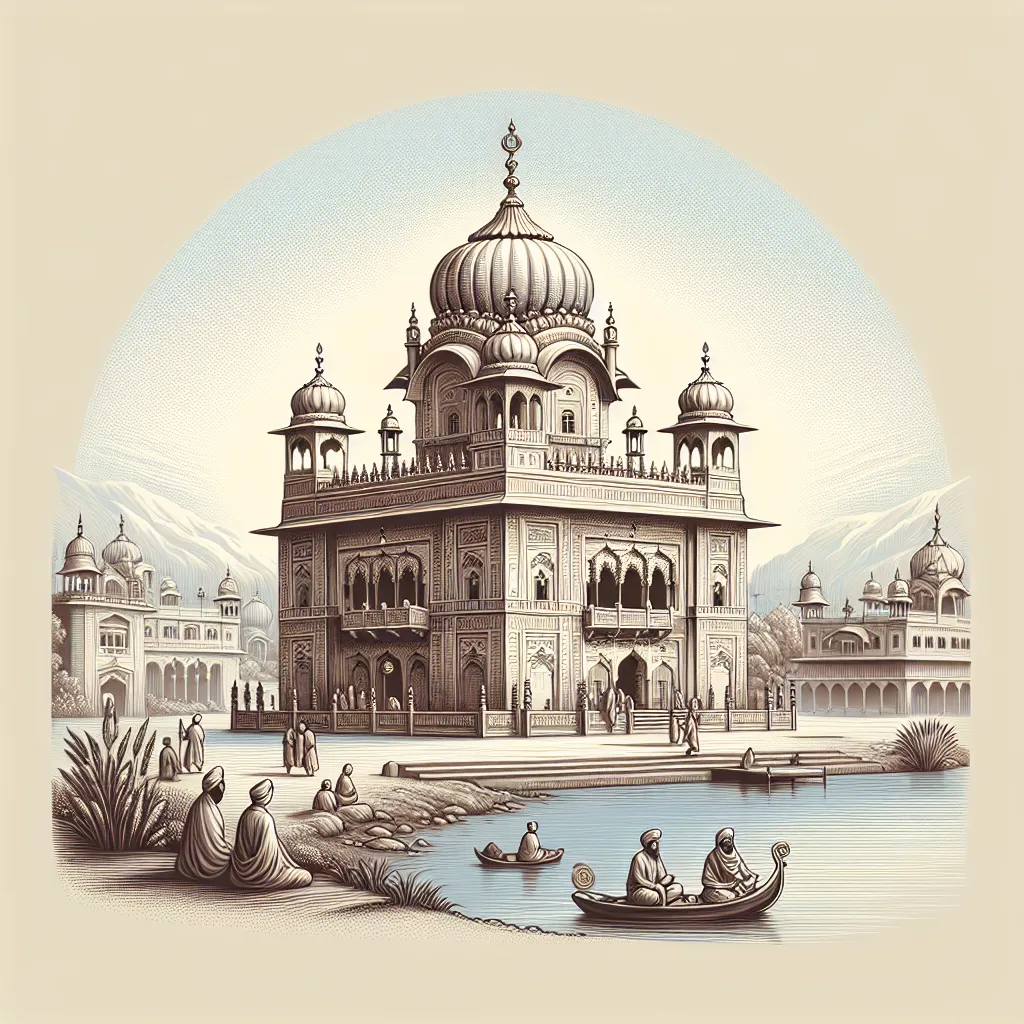
- Published on
- Authors

- Name
- You
The Role of the Gurdwara: Community and Worship in Sikhism
Sikhism, with its rich tapestry of spiritual and communal life, is centered around the Gurdwara – the Sikh temple. The Gurdwara, beyond being a place of worship, serves as a nucleus for community gathering and social services. This exploration delves into the historical evolution, religious significance, and the integral community role of the Gurdwara in Sikh society.
Historical Evolution of the Gurdwara
The term 'Gurdwara' translates to the 'Gateway to the Guru'. Historically, Gurdwaras began as spaces where the Sikh Guru resided or taught. The Golden Temple (Harmandir Sahib) in Amritsar, established by the fourth Sikh Guru, Guru Ram Das, stands as the epitome of this evolution – a center for both spiritual practice and socio-political assembly.
Timeline of Gurdwara Development
| Period | Key Developments |
|---|---|
| 16th Century | Establishment of initial Gurdwaras, primarily around Punjab. |
| 17th Century | Expansion as Sikhism spread, including infrastructure to support langar (community kitchens). |
| 18th Century | Gurdwaras become focal points for Sikh resistance against Mughal persecution. |
| 19th Century | Restoration and growth during the Sikh Empire under Maharaja Ranjit Singh. |
| 20th Century | Global diaspora leads to the establishment of Gurdwaras worldwide. |
Religious Significance
The Five K's and Their Manifestation in the Gurdwara
Sikhism emphasizes personal spirituality and communal harmony through the observance of the Five K’s (Kesh, Kara, Kanga, Kachera, Kirpan). The Gurdwara is pivotal in manifesting these principles through its practices and rituals.
- Kesh (Uncut Hair): Adherents maintain the sanctity of their uncut hair, often covered with a turban (Dastar).
- Kara (Steel Bracelet): Reminder of the divine bond and moral conduct.
- Kanga (Wooden Comb): Symbol of cleanliness and order.
- Kachera (Cotton Undergarments): Denotes modesty and restraint.
- Kirpan (Ceremonial Sword): Embodiment of courage and the duty to protect the weak.
Sacred Texts and Rituals
The Gurdwara houses the Guru Granth Sahib, the eternal Guru of the Sikhs. The daily rituals (Nitnem) and the recitation of hymns (Kirtan) are both reflective of the centrality of the Guru Granth Sahib in guiding the spiritual lives of Sikhs.
Community and Social Services
Langar: The Community Kitchen
One of the most distinguished aspects of the Gurdwara is the Langar, a community kitchen where free meals are served to all, irrespective of caste, creed, or background. This embodies the Sikh spirit of Seva (selfless service) and egalitarianism.
"The Langar breaks social barriers and unites the community in humility and service," explains revered Sikh scholar Bhai Gurdas Singh.
Educational and Health Services
Many Gurdwaras have expanded their role to encompass educational and health services. These may include:
- Khalsa Schools: Educating the young generations in both secular and spiritual knowledge.
- Health Clinics: Providing basic medical care and health education.
- Community Outreach Programs: Including drug rehabilitation and support for the underprivileged.
Crisis Response and Humanitarian Aid
In times of crisis, Gurdwaras around the globe often mobilize resources to provide humanitarian aid. Their swift, organized response in natural disasters and pandemics highlights the Sikh commitment to Sarbat da Bhala (the welfare of all).
Conclusion
The Gurdwara stands not only as a place of worship but as a beacon of community bonding and social goodwill. Its blend of spiritual practice, community service, and egalitarian values make it a cornerstone of Sikh life, reflective of the teachings of the Gurus.
By understanding the multifaceted role of the Gurdwara, we gain deeper insights into the Sikh way of life and the relentless spirit of service that defines this vibrant community.
